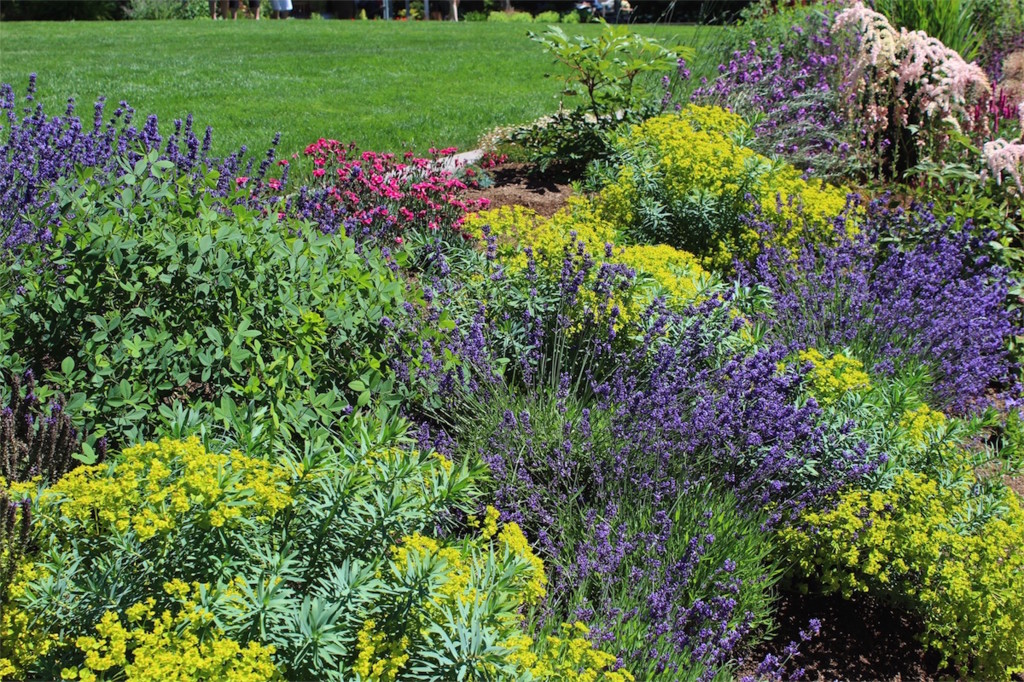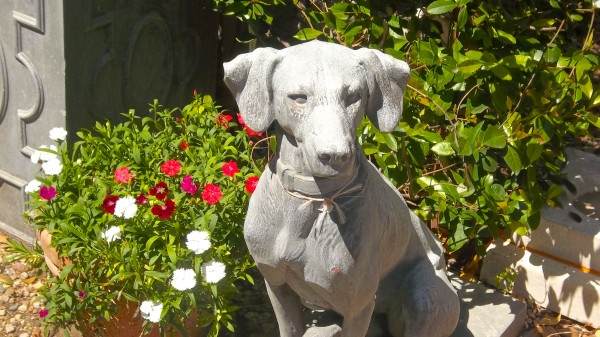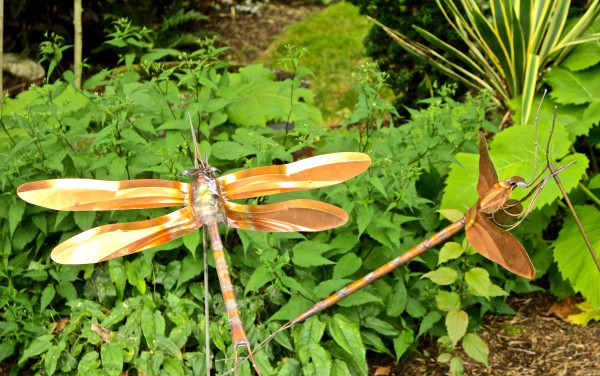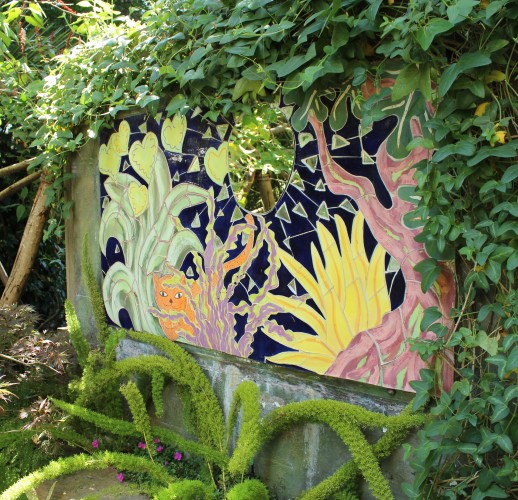Repetition in the garden adds harmony, interest


Chances are you’re heading to the nursery to replace last year’s annuals, pick up more drought tolerant plants, and fill the holes in your spring landscape.
While you’re eager to ramp up the color in your garden, remember that your dormant woody perennials are about to burst forth from the roots. With some rain and sun, they should be back to their previous year’s size in no time. So, don’t start planting new plants all around them or you’ll soon face an overcrowding issue.
It’s hard to resist, with all the beautiful blooms calling to you from the nursery tables. But if you troll the isles, filling your cart with one of these and one of those, you’ll soon find yourself with a smorgasbord. Once you’re home, you realize that you don’t have the right shady spot for this plant or the color in that bed doesn’t work with that plant. What do you do?
You start plopping. This highly technical term applies to gardeners lacking willpower and a plan. And, it applies to collectors who want to have it all. But, come July, you’ll find yourself shielding your eyes, wondering what to do with the red Turk’s cap next to the orange abutilon next to the pink pavonia.
This doesn’t mean you can’t add individual plants into the right places in your landscape; it does mean planning ahead. After you’ve thought about adding complementary colors and mixing in interesting textures and forms, think: repetition.
As you close your eyes and picture the garden of your dreams, make a list of the plants that you’d like to add – and then add two more, or four more – of each.
This is the rule of 3 – a basic design principle that objects that are arranged or grouped in odd numbers – 3, 5, 7 — are more appealing, memorable, and effective than even-numbered combinations. Odd numbers create harmony and encourage movement and visual interest. This principle applies to many other areas as well, including interior design, photography and graphic design.
Repetition in the garden helps create a unified planting scheme. When you plant multiples of identical or similar components, you add interest to your landscape design. Plopping generally conveys a hodge-podge approach, whereas incorporating repetition provides your design with greater impact.
With onesie-twosie planting, plants often get lost. There are so many different plants vying for attention that nothing stands out. Instead, buy 3 or 5 of the same plant and create a vignette that allows the one or two other plants in the same space to shine against a uniform backdrop. You can also add different, yet very similar plants, or elements like garden art, or plants of the same color to create a cohesive design
Crafting a beautiful landscape design requires planning and forethought to ensure harmony and continuity. As you begin to plan and make your spring nursery list, think about how you can to add repetition in your landscape with new groupings of plants. Step back and analyze your beds as though they were empty – a series of blank canvases waiting to be filled. Don’t be afraid to move some plants – either to better locations or to make room to add the right combination of plants. Sometimes, you even have to let go of plants that don’t work anymore in your garden. Perhaps you have a friend with the perfect spot for it – don’t be afraid to clean house a little when you are planning.
Local Landscape Designer and Garden Coach Diana Kirby provides landscaping tips at http:/www.dianasdesignsaustin.com and writes a garden blog at https://www.dianasdesignsaustin.com

 The current trend to create “rooms” in our gardens is opening doors to incorporating more art into our landscapes. Garden design has taken on a new sophistication in recent years, evolving from the traditional whiskey barrel planters and gnomes of old.
The current trend to create “rooms” in our gardens is opening doors to incorporating more art into our landscapes. Garden design has taken on a new sophistication in recent years, evolving from the traditional whiskey barrel planters and gnomes of old. You probably shop around to find just the right painting or pottery for that special place in your home. Now, the popularity of indoor decorating with items from nature also carries over and makes that possible in the garden. Home stores like Pier 1, World Market, Home Goods and other larger retailers are adding outdoor-themed decor to their shelves. Stone or ceramic irds, iron scrollwork and small statues have become staples, available for both indoor and outdoor use. A variety of stores also offer all-weather paintings that can brighten up a fence or front porch. A few carefully-selected items and you can add a new twist to your garden rooms.
You probably shop around to find just the right painting or pottery for that special place in your home. Now, the popularity of indoor decorating with items from nature also carries over and makes that possible in the garden. Home stores like Pier 1, World Market, Home Goods and other larger retailers are adding outdoor-themed decor to their shelves. Stone or ceramic irds, iron scrollwork and small statues have become staples, available for both indoor and outdoor use. A variety of stores also offer all-weather paintings that can brighten up a fence or front porch. A few carefully-selected items and you can add a new twist to your garden rooms. Consider areas in the garden that might need a special focal point or sprucing up. And think about the point of view – do you want something to see when you look out your kitchen window or from the couch? Or do you want to place a little treasure in some secret spot in the garden to surprise visitors to the garden?
Consider areas in the garden that might need a special focal point or sprucing up. And think about the point of view – do you want something to see when you look out your kitchen window or from the couch? Or do you want to place a little treasure in some secret spot in the garden to surprise visitors to the garden?